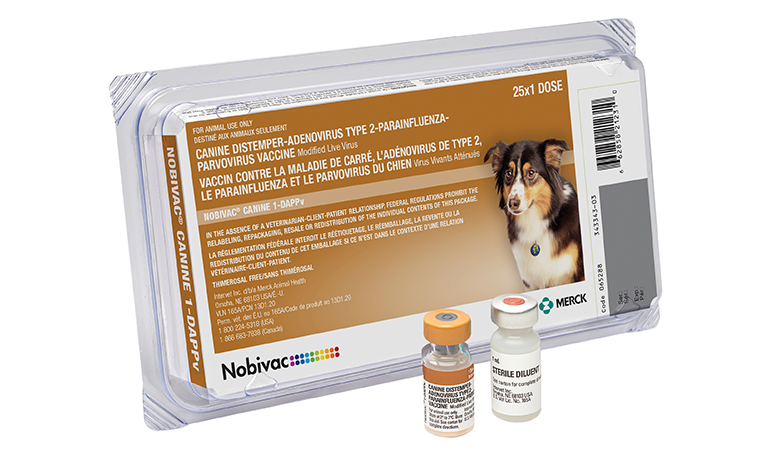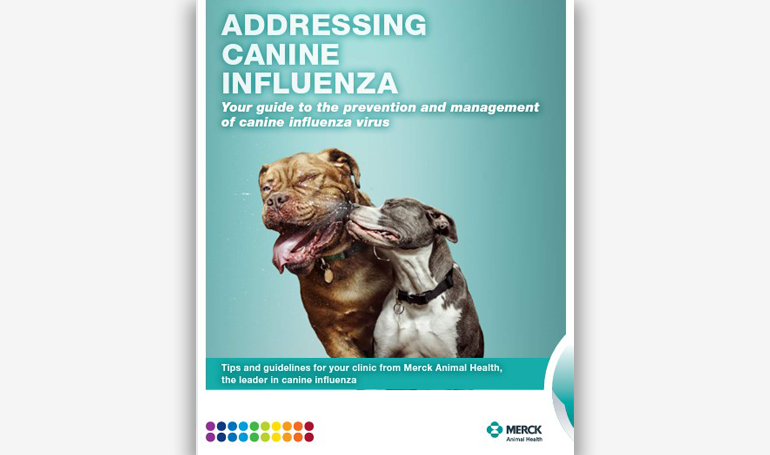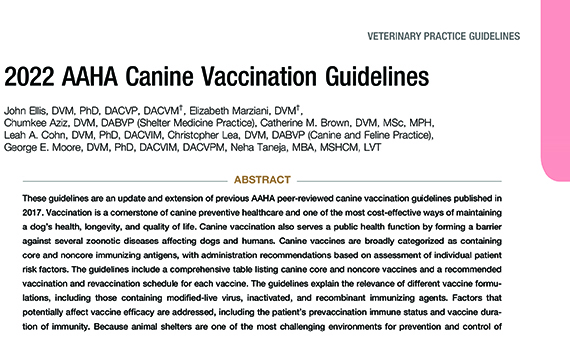

Canine Distemper
Canine distemper is a viral disease of dogs seen worldwide. It is highly contagious and affects a large number of species.
Overview | Transmission | Signs | Risk Factors | Outcomes | Spreading | Diagnosis | Vaccines | Resources
Disease Overview
Canine distemper is a highly contagious, often fatal disease, caused by a virus that attacks the respiratory, gastrointestinal, and the nervous systems. Its epidemiology is complicated by the large number of species susceptible to infection.
Characterization of the disease includes a diphasic fever, leukopenia, GI and respiratory clinical signs, and frequently pneumonic and neurologic complications.
CANINE DISTEMPER FAST FACTS
- Contact with recently infected animals keeps the virus in a population, especially with new puppies susceptible to infection.
- Dogs that do not receive periodic immunizations may lose their protection and become infected after stress, immunosuppression, or contact with diseased animals.34
TRANSMISSION
Distemper can be spread through bodily secretions but is more commonly spread through airborne transmission.
- The distemper virus initially replicates in the lymphatic tissue of the respiratory tract.
- The virus then infects all lymphatic tissues, followed by infection of respiratory, GI, and urogenital epithelium, as well as the CNS and optic nerves.
- Distemper then passes through bodily secretions or droplets into the environment.
- Other dogs can become infected through this transmission.
CLINICAL SIGNS
- Fever
- Nasal discharge
- Coughing
- Vomiting
- Diarrhea
- Seizures
DOGS AT RISK
Distemper is more likely to be found in dogs with the following characteristics or lifestyles:
- Young dogs
- Previously living in shelters, rescue centers, breeding kennels, or pet stores
- Boarded at a kennel or doggie daycare
- Visiting groomers, dog parks, or engaging with other dogs on a daily basis
- Living in multi-pet homes
MORBIDITY THREATS
Onset of canine distemper involves:
- Fevers, anorexia, serous nasal discharge, mucopurulent ocular discharge, lethargy, and anorexia
Secondary clinical signs:
- Bacterial infections and complications, neurological manifestations including circling, head tilt, nystagmus, paresis to paralysis, and focal to generalized seizures
- Localized involuntary twitching of a muscle or group of muscles (myoclonus, chorea, flexor spasm, hyperkinesia) and convulsions characterized by salivation and, often, chewing movements of the jaw (“chewing-gum fits”) are considered classic neurologic signs
An acute phase may produce:
- Hyperkeratosis of the footpads and epithelium of the nasal planum, as well as enamel hypoplasia in incompletely erupted teeth
SPREADING DISEASE
The main route of infection is via aerosol droplet secretions from infected animals.
- Some infected dogs may shed virus for several months
DIAGNOSIS
Distemper should be considered in the diagnosis of any febrile condition in dogs with multisystemic manifestations.
Characteristic signs sometimes do not appear until late in the disease, and the clinical picture may be modified by concurrent parasitism and numerous viral or bacterial infections.
Merck Animal Health Vaccines

NOBIVAC® CANINE 1-DAPPv
This product has been shown to be effective for vaccination of healthy dogs 6 weeks of age or older against canine distemper virus, canine adenovirus type 1 (hepatitis), canine adenovirus type 2 (respiratory disease), canine parainfluenza virus and canine parvovirus.
ALSO AVAILABLE
Professional Resources and Educational Materials
Keep your clinic and staff informed and aware of diseases and outbreaks.

Nobivac® Social Media Kits
Digital Assets
Use these ready-to-share posts to educate pet parents and drive business to your clinic for preventative care.

Addressing CIV in Your Clinic
eBook
Tips and guidelines for your clinic to prevent and manage canine influenza.

AAHA Canine Vaccination Guidelines
SOP
In-depth information about canine vaccinations and veterinary best practices.
No items to show.

